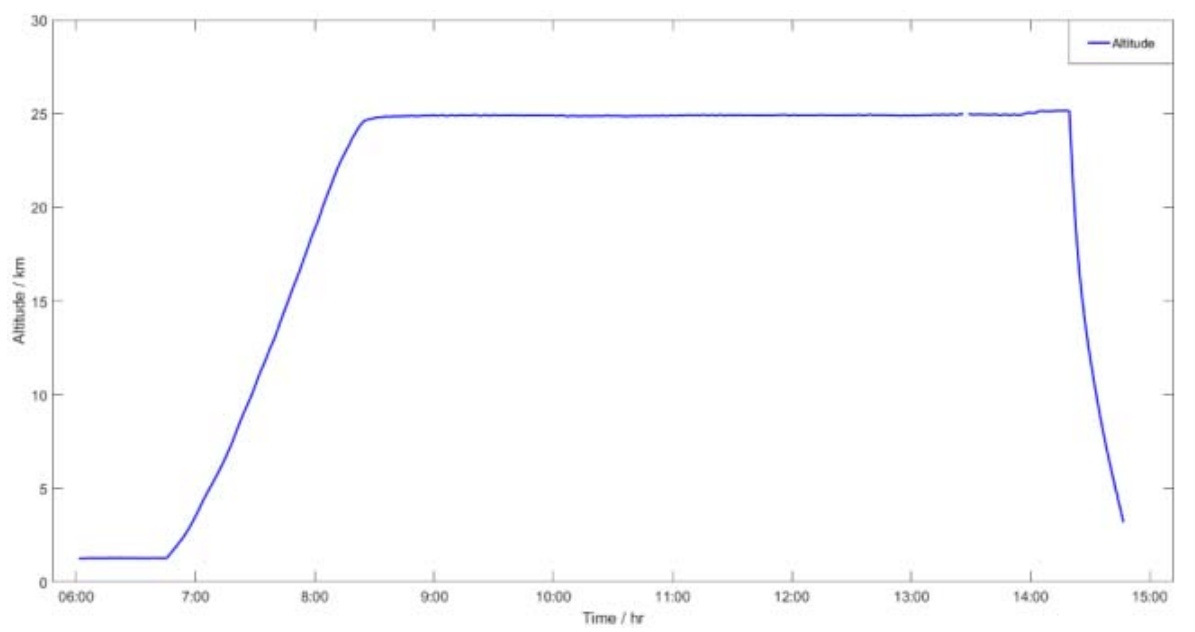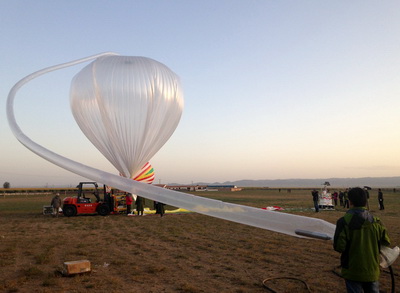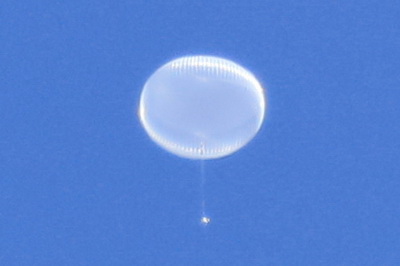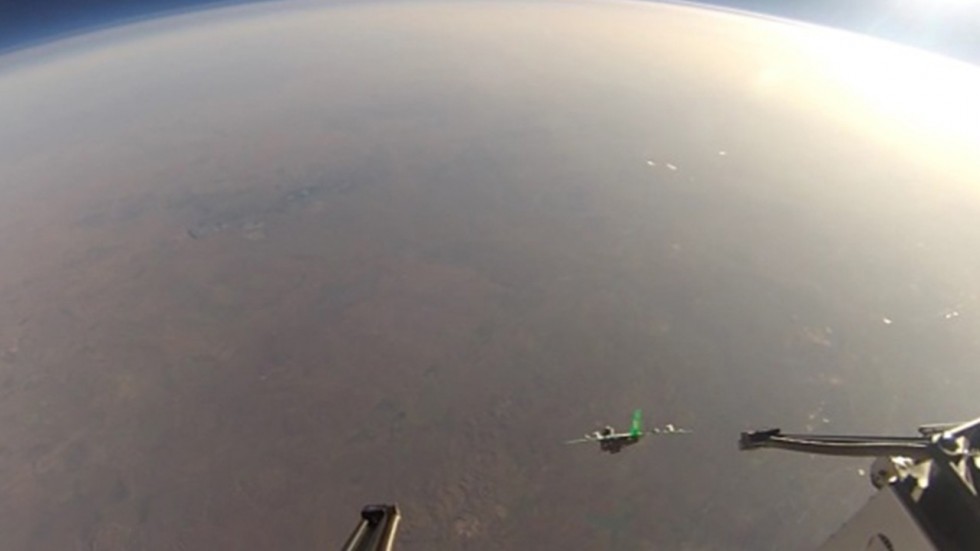Purpose of the flight and payload description
This was the maiden flight of a pumpkin shaped superpressure balloon developed at the Institute of Optoelectronics of the Chinese Academy of Sciences. The volume of the was about 7,000 cubic meters, and was designed to reach a maximum altitude of 25 kilometers transporting a load of about 150 kilograms. A series of tendons running from top to bottom of the balloon help to whitstand the overpressure and avoid burst.
In terms of payload, the superpressure balloon flight transported several experiments including the launch of an unammned vehicle from high-altitude, test of a thermal control system in the payload, studies of effects of altitude in plants and seeds, calibration and testing od solar cells.
Details of the balloon flight

Balloon launched on: 9/10/2017 at 6:45 local time
Launch site: Xilin Gol, Inner Mongolia, China
Balloon launched by: Institute of Optoelectronics, Chinese Academy of Sciences
Balloon manufacturer/size/composition: Super Pressure Balloon 7.000 m3
End of flight (L for landing time, W for last contact, otherwise termination time): 9/10/2017 at ~ 15:00 local time
Balloon flight duration (F: time at float only, otherwise total flight time in d:days / h:hours or m:minutes - ): 8 h
The balloon -designed to float at 25 km with a suspended load of 100 kg- was launched from an undisclosed site in Inner Mongolia (probably Xilin-Gol) on September 10, 2017 at 6:45 local time. It
took approximately 110 minutes before the balloon reached float altitude, a total of 22 kg of ballast was dropped in several increments to pressurize the super-pressure balloon. The balloon remained afloat at 25 km for about 5 hour and 45 minutes before cut down. After the balloon completed its scheduled flight mission, both the payload and the balloon itself were successfully recovered. Total flight time was 8 hours.
Above these lines can be seen the flight profile of the mission.
The test served to verify a number of key technologies including the balloon design, flight control, long-distance measurement and control technology, test release and recovery techniques for superpressure balloons. Very valuable data was obtained on the differential pressure and temperature of the balloon in flight which will be applied to improve the design in the near future. During the whole flight the height fluctuation was within the range of tens of meters, which showed the characteristics of strong pressure resistance and small height fluctuation of the design.
In terms of environment, this overpressure balloon flight effectively verified the team's ability to predict and forecast the stratospheric wind environment. Before the flight, the wind field forecasters successfully analyzed and predicted the height and changes of the quasi-zero wind layer. In actual flight, the balloon basically remained in the quasi-zero wind layer after entering leveled flight. The total flight area during the entire mission was within the range of tens of kilometers, realizing a regional fixed-point flight.
External references
- China tests new spy drones in near space �death zone' South China Morning Post
- Largage de drone par un ballon en stratosphère East Pendulum website
- Modeling and simulation of the thermal-dynamic performance of super-pressure balloon Proceedings of the 43rd Chinese Control Conference, July 28-31, 2024, Kunming, China
- Photovoltaic Institute developed super-pressure balloons to achieve the first flight in the near space Press release in Chinese, Academy of Opto-Electronics website
- Project of high altitude balloon launched micro glider: Aircraft design, control and flight test International Journal of Micro Air Vehicles. 2020;12:313-330
14465If you consider this website interesting or useful, you can help me to keep it up and running with a small donation to cover the operational costs. Just the equivalent of the price of a cup of coffee helps a lot.




